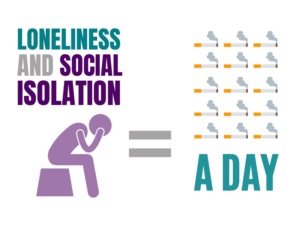 Social isolation in seniors is a very real issue – even before the pandemic….
Social isolation in seniors is a very real issue – even before the pandemic….
As human beings, we are social animals and have relied on our social networks for survival throughout time. As we age, these social networks contract for various reasons – including but not limited to: organic reasons (longtime friend/spouse passed away); intentional (do not like their political views); misunderstandings; lack of energy required to maintain relationships; etc – leaving our senior loved ones isolated and lonely much of the time.
“If one is not intentional in maintaining or re-building social connections, they will be forgotten. The recent research on social isolation in seniors is alarming; it is up to our generation to keep our seniors engaged,” says Andrew Dubler, co-owner of Home to Stay Senior Care Solutions in Cherry Hill, NJ.
For instance, according to a recent study by National Social Life, Health and Aging Project, social isolation/loneliness results in:
- Decreased physical and mental health
- Increased risk for mortality
- Increased risk for developing dementia (up to a 50% increase!)
- Increased risk of depression
What can be done to help? It is very straightforward – start by increasing the amount of people around the isolated senior and be intentional about it! Create a visitation schedule for family and friends to stop and visit with the senior. Connect with local volunteer organizations (churches – Alzheimer’s Associations local chapters – retirement groups – local men’s/women’s clubs) and be intentional with asking for help to supplement your visitation schedule.
Growing old is not something we are engineered to do alone…it should always be done together! Help us spread awareness this July 11th by celebrating Cheer Up the Lonely Day.
“Loneliness and social isolation can be as damaging to health as smoking 15 cigarettes a day, researchers warned in a recent webcast, and the problem is particularly acute among seniors, especially during holidays.” – HRSA







